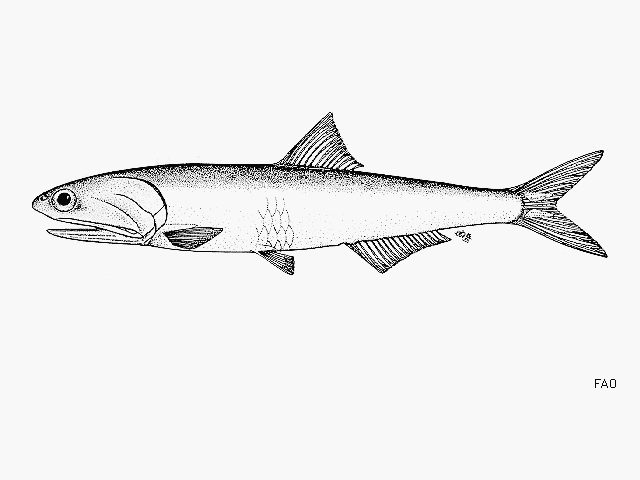| Engraulidae (Anchovies), subfamily: Engraulinae |
| 24.8 cm SL (male/unsexed); max.weight: 68.0 g; max. reported age: 7 years |
|
pelagic-neritic; marine; depth range 0 - 310 m |
| Northeast Pacific: northern Vancouver Island south to Cape San Lucas, Baja California, Mexico. Two subspecies recognized: Engraulis mordax mordax from British Columbia to Baja California and Engraulis mordax nanus in Bays of California. |
|
Dorsal spines (total): 0-0; Dorsal soft rays (total): 14-19; Anal spines: 0-0; Anal soft rays: 19-26; Vertebrae: 43-47. Snout quite sharply pointed; maxilla moderate, tip sharply pointed, reaching to or almost to hind border of pre-operculum, projecting well beyond tip of second supra-maxilla; tip of lower jaw below nostril. gill rakers slender, long; absent on hind face of third epibranchial. Anal fin origin under about base of last dorsal fin ray. A silver stripe along flank, disappearing with age. |
| Usually found in coastal waters within about 30 km from shore, but as far out as 480 km, forming large, tightly packed schools. Enters bays and inlets. Feeds on euphausiids, copepods and decapod larvae, both by random filter-feeding and by 'pecking' at prey. Oviparous, epipelagic batch spawner (Ref. 6882). Spawns throughout the year, peaking once (Ref. 6882). Processed into fishmeal, used as bait for tuna, occasionally canned (Ref. 9298). |
|
Data deficient (DD); Date assessed: 08 May 2020 Ref. (130435)
|
| harmless |
Source and more info: www.fishbase.org. For personal, classroom, and other internal use only. Not for publication.
